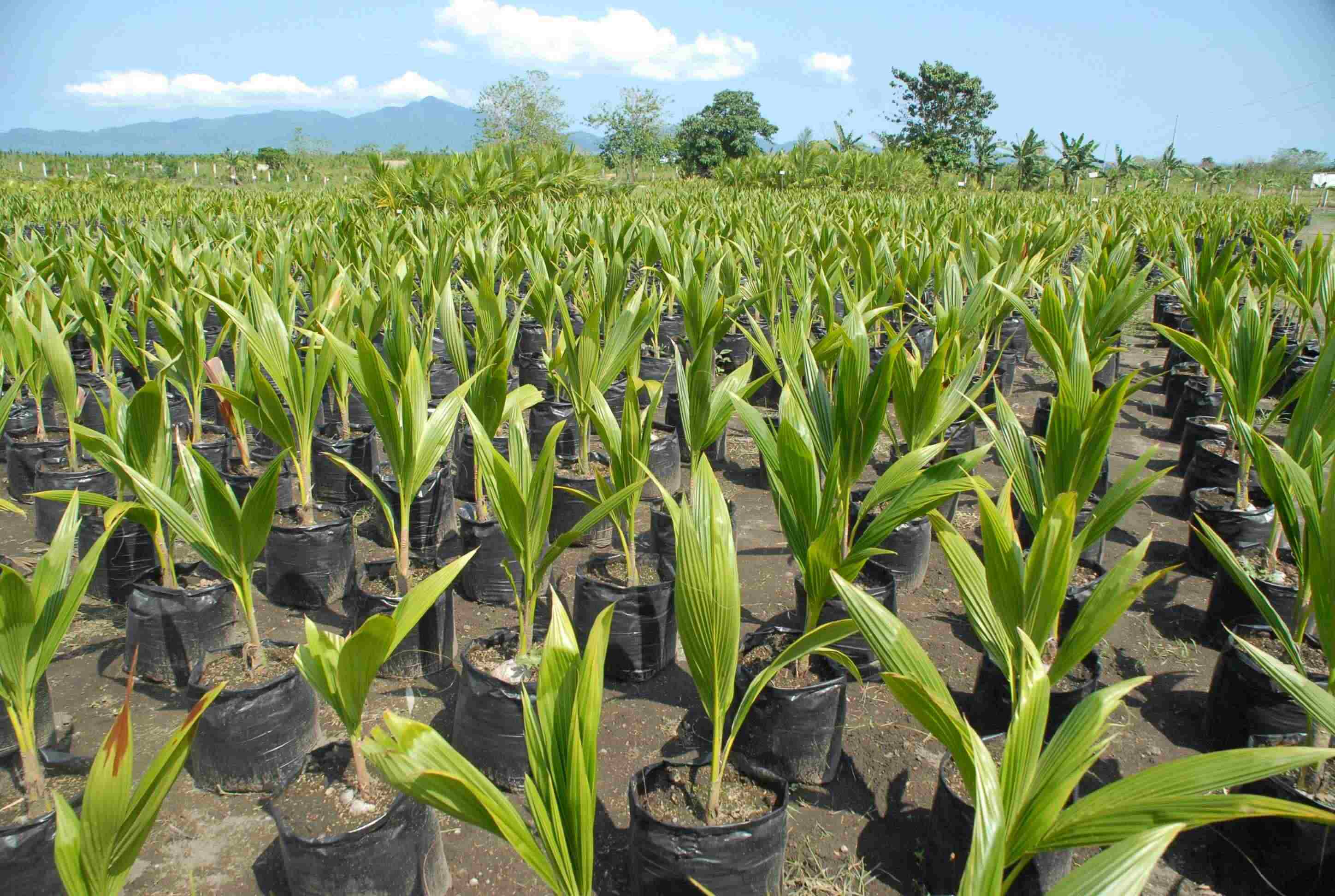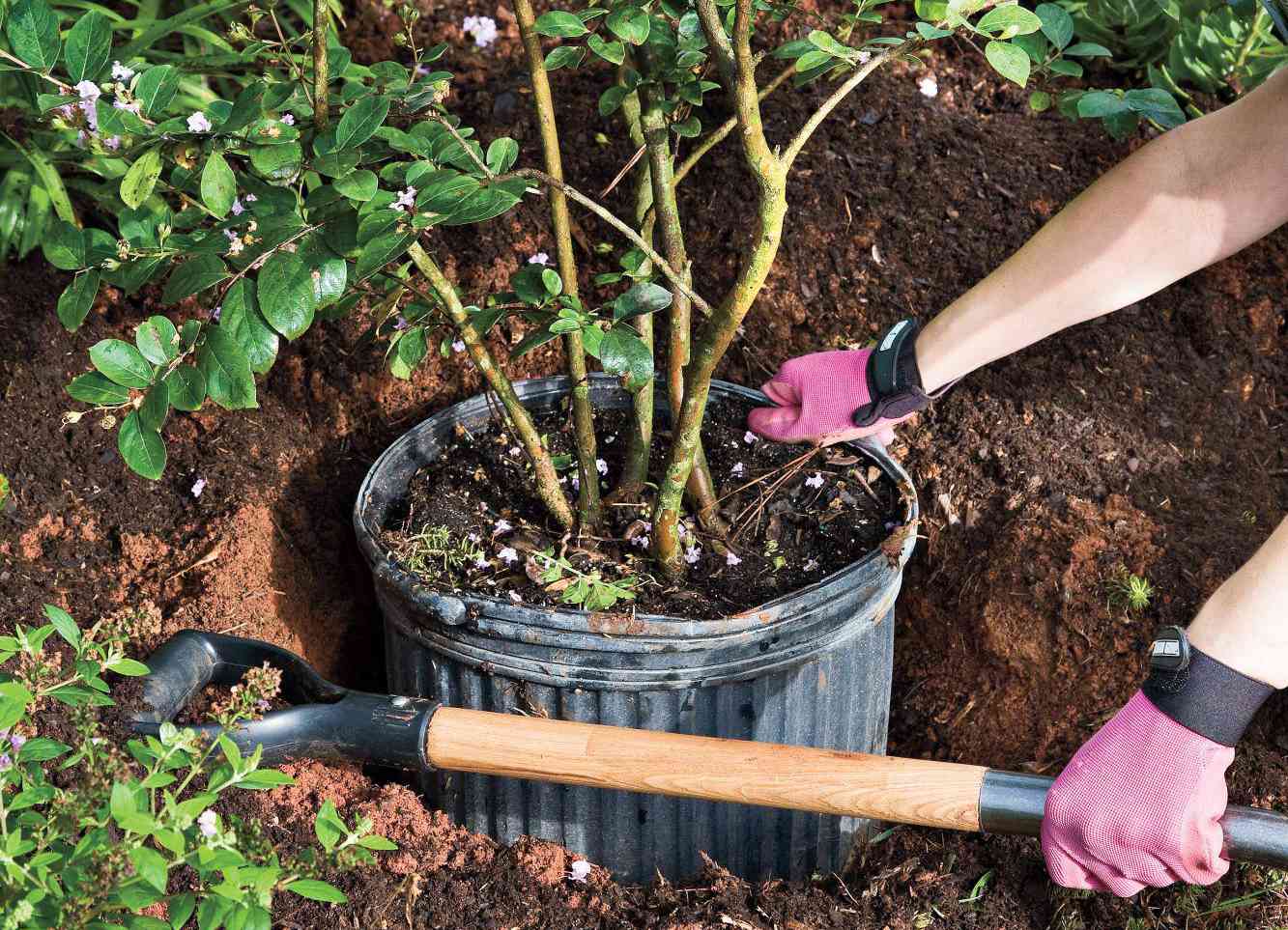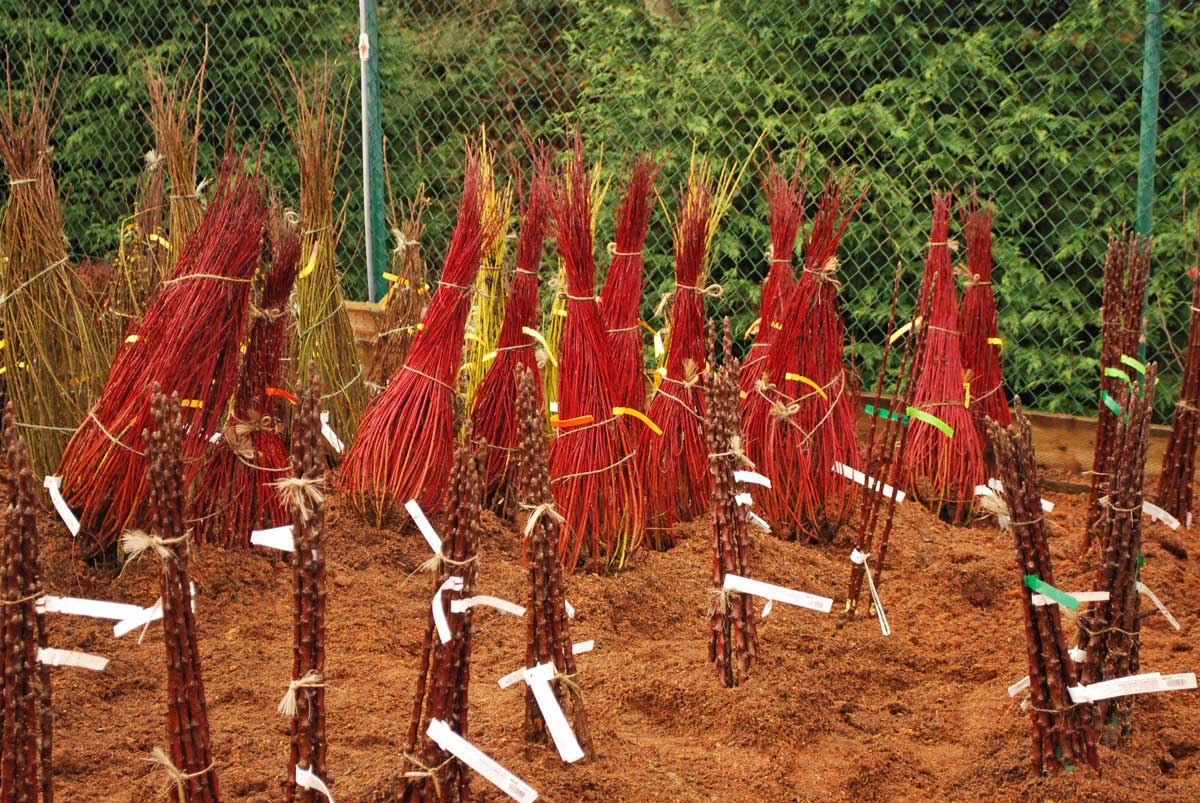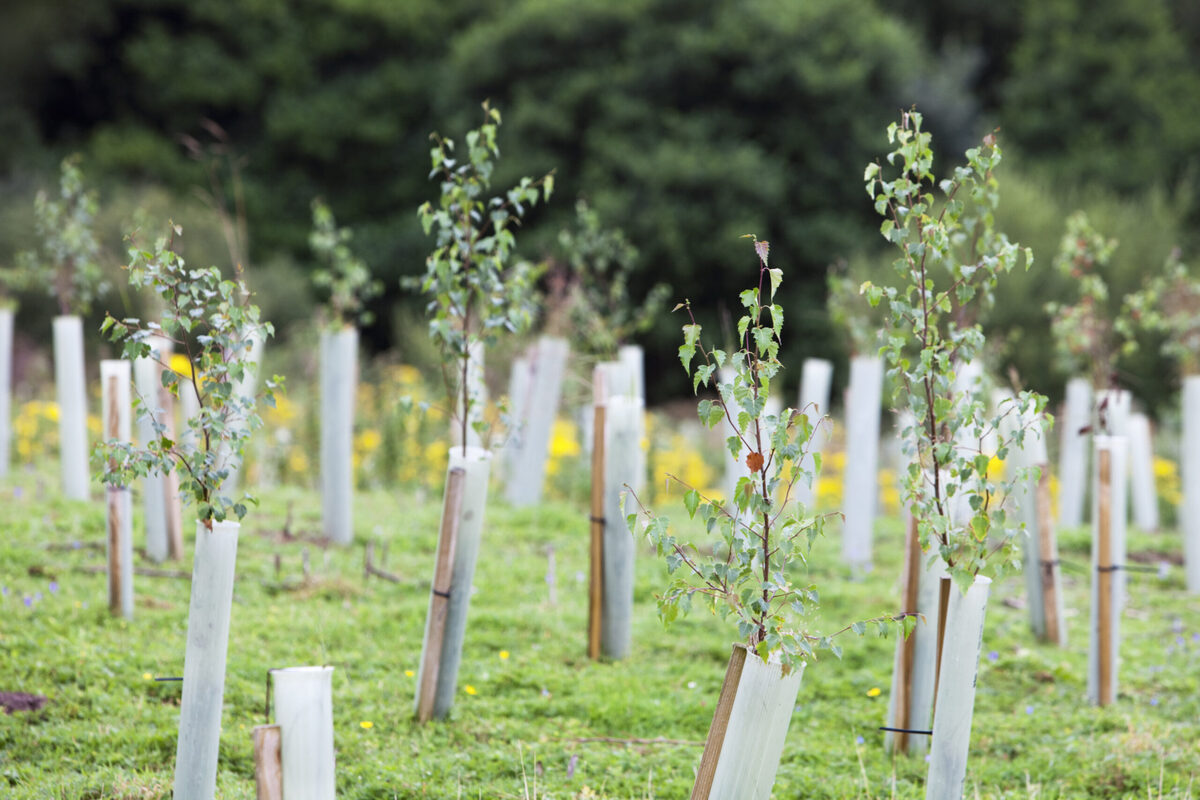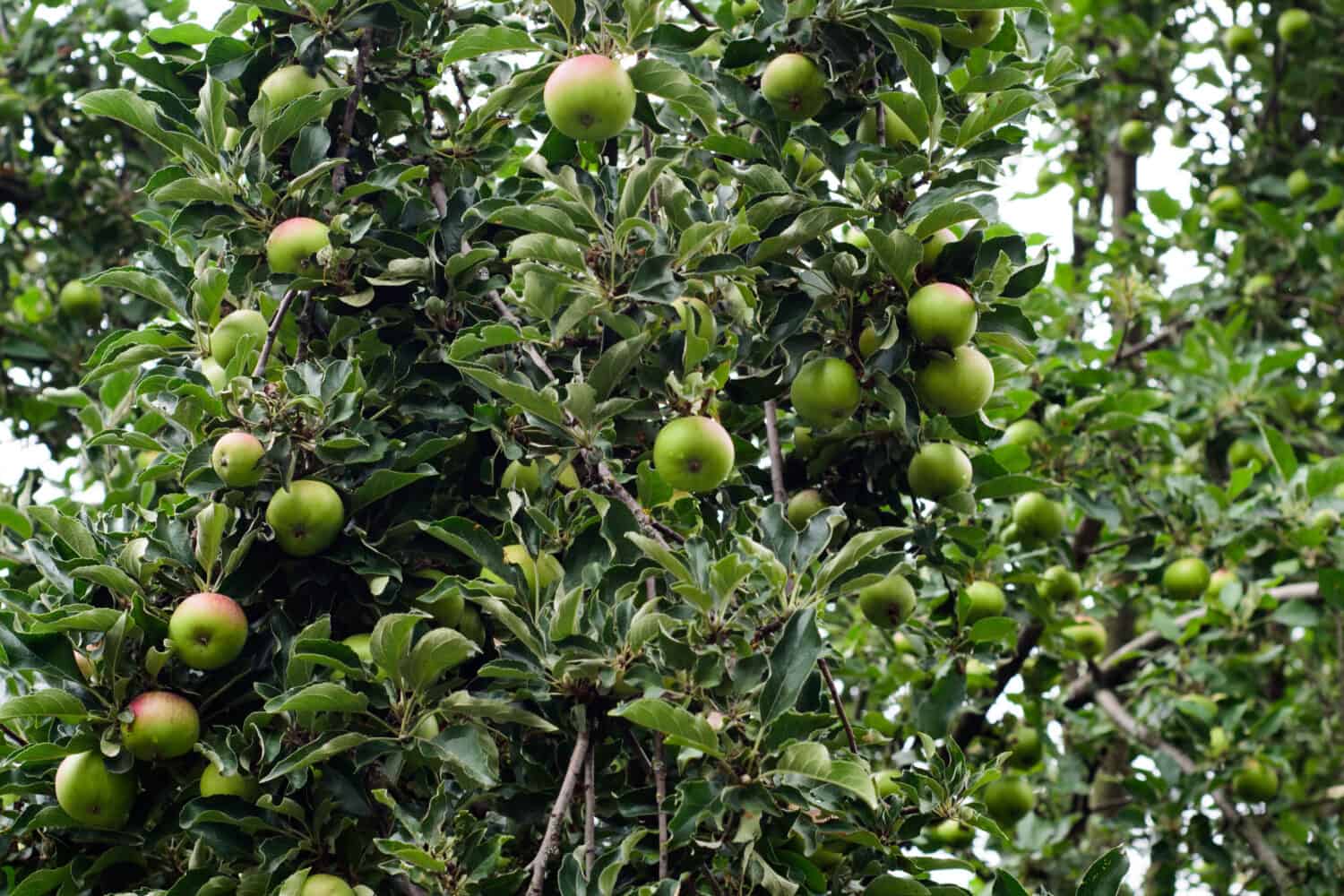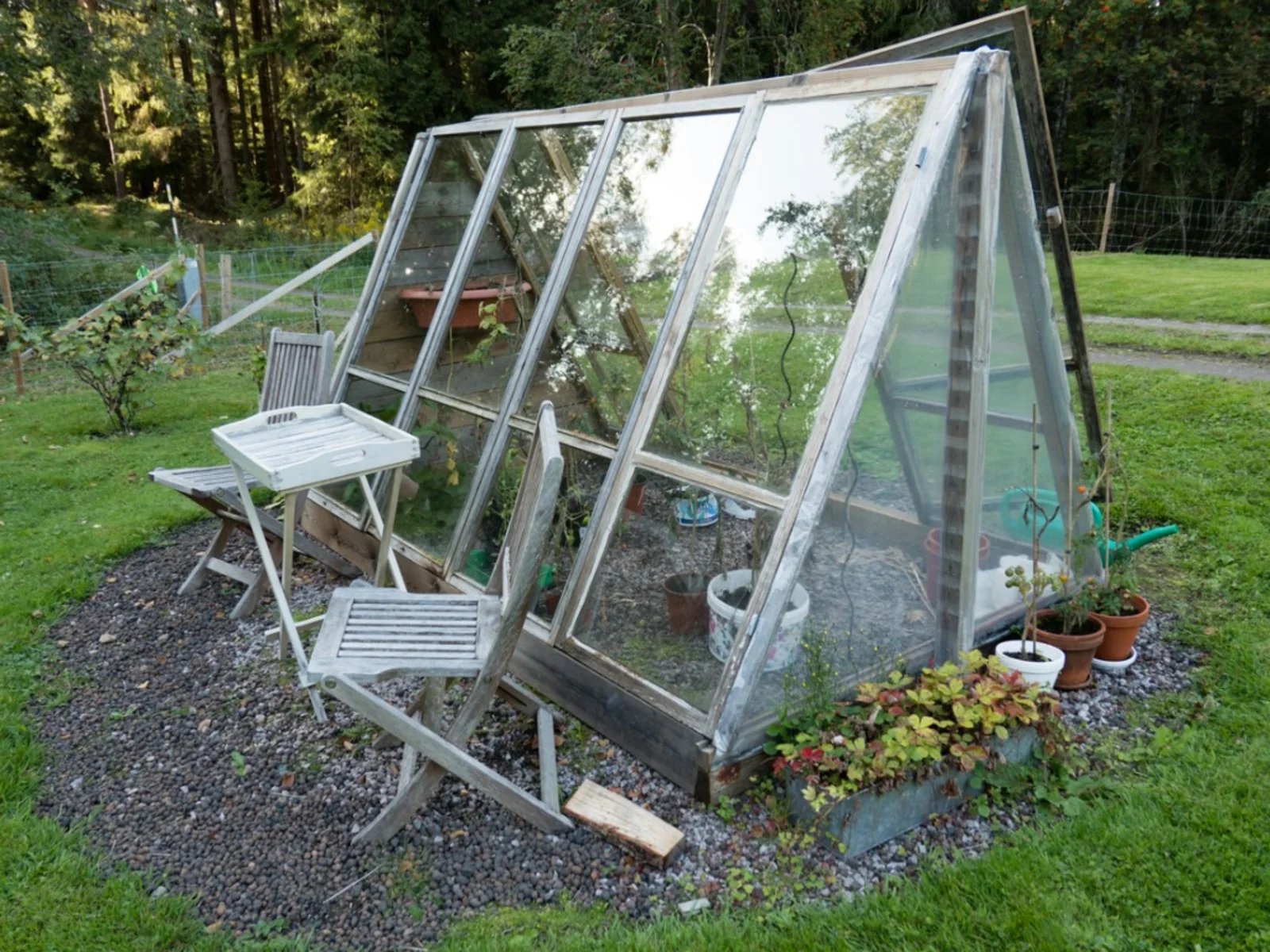Home>Gardening News and Trends>Latest News>When Old Men Plant Trees


Latest News
When Old Men Plant Trees
Modified: February 8, 2024
Get the Latest News on When Old Men Plant Trees - Stay Updated with the Latest Trends and Developments in the World of Tree Planting. Don't Miss Out!
(Many of the links in this article redirect to a specific reviewed product. Your purchase of these products through affiliate links helps to generate commission for Chicagolandgardening.com, at no extra cost. Learn more)
Table of Contents
Introduction
Tree planting is an essential and impactful activity that contributes to the conservation of our planet and the well-being of future generations. It is increasingly gaining momentum as individuals and communities recognize the critical role that trees play in maintaining a healthy environment. While tree planting can be embraced by people of all ages, there is a unique significance when it is done by old men.
Old men planting trees symbolize the wisdom, experience, and depth of knowledge that comes with age. Their act of planting trees represents a legacy they wish to leave behind for future generations to enjoy. It demonstrates their commitment to environmental preservation and their desire to make a lasting positive impact on the world.
But what motivates old men to engage in tree planting? There are various reasons why they take up this noble endeavor. It could be a personal passion for nature, a desire to contribute to a greener future, or a way to stay active and connected in their communities. Regardless of their individual motivations, old men planting trees play a crucial role in shaping the landscape and fostering a sustainable ecosystem.
Tree planting offers numerous benefits, both immediate and long-term. Beyond the aesthetic appeal of seeing lush greenery, trees help combat climate change by absorbing and storing carbon dioxide. They improve air quality by filtering pollutants, provide shade and cooling effect, prevent soil erosion, and support biodiversity by creating habitats for wildlife. Additionally, trees can enhance the quality of life in urban areas, reduce noise pollution, and even boost property values.
While the benefits of tree planting are undeniable, there are challenges and limitations that need to be addressed. Planting trees requires careful planning, suitable locations, and appropriate species selection to ensure their survival and growth. Old men may face physical limitations that hinder their ability to engage in labor-intensive activities, but their knowledge and experience can still be valuable in guiding tree planting initiatives.
In this article, we will explore the importance of tree planting, delve into the symbolism behind old men planting trees, examine the reasons why they choose to do so, and discuss the benefits, challenges, and success stories associated with this noble pursuit. Furthermore, we will envision the future of tree planting and the role that old men can continue to play in creating a sustainable and thriving environment for generations to come.
The Importance of Tree Planting
Tree planting is of paramount importance for the health and well-being of our planet. Trees are not only aesthetically pleasing but also serve as vital components of the ecosystem. They play a crucial role in mitigating climate change, improving air and water quality, conserving energy, and supporting biodiversity.
One of the primary benefits of tree planting is its ability to combat climate change. Trees act as natural carbon sinks, absorbing carbon dioxide from the atmosphere and storing it as carbon. This helps to reduce the concentration of greenhouse gases, which are major contributors to global warming. By planting trees, we can contribute to the sequestration of carbon and help to stabilize the climate.
In addition to their role in climate regulation, trees have a significant impact on air quality. Through the process of photosynthesis, trees absorb pollutants such as nitrogen dioxide, sulfur dioxide, and particulate matter, thereby improving air quality in urban areas. They also release oxygen, making the air cleaner and more breathable for humans and wildlife.
Moreover, tree planting plays a vital role in conserving energy. Strategically planted trees around buildings provide shade and cool the surrounding areas, reducing the need for air conditioning during hot summer months. This not only saves energy but also lowers electricity bills and reduces the demand for fossil fuel consumption.
Another critical aspect of tree planting is its contribution to biodiversity conservation. Trees provide habitats for a diverse range of species, including birds, insects, and mammals. By planting and preserving trees, we create and maintain essential ecosystems that support the survival and proliferation of various plants and animals. This promotes ecological balance and preserves the delicate web of life.
Furthermore, trees help to prevent soil erosion and protect water resources. Their extensive root systems anchor the soil, preventing it from being washed away by heavy rain or runoff. Trees also act as natural filters, trapping sediment and absorbing excess water, thereby reducing the risk of floods and maintaining water quality in rivers, lakes, and aquifers.
The importance of tree planting extends beyond environmental benefits. Trees provide numerous social and economic advantages as well. They enhance the aesthetic appeal of neighborhoods, parks, and urban spaces, making them more enjoyable and attractive. Green spaces with trees have been linked to improved mental health, reduced stress levels, and increased well-being.
Economically, tree planting can boost local economies. The forestry industry generates jobs in tree nurseries, landscaping, and forest management. Additionally, the increased property values associated with tree-lined streets and green landscapes positively impact real estate and tourism sectors.
In summary, tree planting is vital for maintaining a habitable planet. It contributes to climate change mitigation, improves air and water quality, conserves energy, preserves biodiversity, and provides social and economic benefits. By recognizing and embracing the importance of tree planting, we can actively contribute to a greener and more sustainable future for ourselves and generations to come.
The Symbolism of Old Men Planting Trees
Old men planting trees carry a deep symbolism that goes beyond the act itself. It represents a powerful metaphor for wisdom, legacy, and the desire to leave a positive impact on future generations. Their involvement in tree planting reflects their understanding of the importance of preserving the environment and their commitment to creating a sustainable world.
Old age is often associated with wisdom and experience. The act of planting trees by old men signifies the accumulated knowledge and insights they have gained over a lifetime. Their decision to engage in tree planting demonstrates their recognition of the value of nature and their desire to impart that wisdom to younger generations. It is a way for them to pass on their legacy and ensure that their knowledge and values are carried forward.
Furthermore, old men planting trees can be seen as a form of caretaking and nurturing. Just as they have nurtured their families and communities throughout their lives, they now extend that care to the natural world. Planting trees signifies their role as stewards of the environment, working towards the betterment of society and greater well-being for all.
The act of tree planting by old men also carries a sense of hope and optimism for the future. It symbolizes their belief that positive change is possible and that they can contribute to a better world, even in the later stages of life. By planting trees, they demonstrate their faith in the resilience and regenerative power of nature, inspiring others to take action and make a difference.
Moreover, old men planting trees serve as role models and catalysts for change. Their actions inspire younger generations to engage in environmental conservation and to value the natural world. By witnessing the commitment and dedication of older individuals, younger people are encouraged to take up the mantle and continue the work of tree planting and environmental stewardship.
Old men planting trees also challenge stereotypes and societal expectations of aging. Their participation in physically demanding activities like tree planting showcases their vitality, strength, and determination. It defies the notion that old age is synonymous with passivity and decline, emphasizing the value and capabilities of older individuals in contributing to society.
The symbolism of old men planting trees transcends cultural and geographic boundaries. It is a universal representation of wisdom, love for nature, and the desire to create a better world. The image of an old man with a shovel in hand, planting a tree, evokes a sense of reverence and admiration, reminding us of the interconnectedness of generations and our shared responsibility to protect and preserve our planet.
In summary, the act of old men planting trees holds profound symbolism. It signifies wisdom, legacy, caretaking, hope, and inspiration. It challenges age-related stereotypes and serves as a rallying call for environmental conservation. The symbolic power of old men planting trees resonates with people of all ages, inspiring collective action and fostering a deep connection to the natural world.
Reasons Why Old Men Plant Trees
Old men engage in tree planting for various reasons, driven by personal motivations and a deep sense of purpose. The following are some common reasons why old men choose to plant trees:
- Preserving a Legacy: As old men approach the later stages of life, they often reflect on the legacy they want to leave behind. Planting trees serves as a tangible manifestation of their values and beliefs. It allows them to make a lasting impact on the environment and contribute to a greener future for generations to come.
- Connecting with Nature: Many old men have developed a deep appreciation and love for nature over the years. Planting trees gives them an opportunity to reconnect with the natural world and immerse themselves in its beauty. It provides a sense of tranquility, purpose, and fulfillment, fostering a stronger connection to the environment.
- Environmental Preservation: Old men understand the importance of environmental conservation and the dire consequences of deforestation. They feel a responsibility to take action and do their part in mitigating climate change and preserving natural habitats. Planting trees is their way of contributing to the well-being of the planet and combating ecological degradation.
- Maintaining Physical Activity: Many old men find joy in engaging in physical activities that keep them mentally and physically active. Tree planting allows them to stay physically fit and engaged in meaningful work. It provides them with a sense of purpose and accomplishment as they see the results of their efforts in the form of growing trees.
- Community Engagement: Tree planting often takes place in community settings, providing old men with an opportunity to connect with others who share their passion for the environment. It allows them to contribute to their local communities, build relationships, and inspire others, especially younger generations, to join in the cause of environmental conservation.
It is important to note that while these reasons are common among old men, they are not exclusive. People of all ages can be motivated by these factors to engage in tree planting and environmental stewardship.
In summary, old men plant trees for a multitude of reasons. Whether it’s to preserve a legacy, connect with nature, contribute to environmental preservation, maintain physical activity, or engage with their community, the act of planting trees holds deep meaning and purpose for these individuals. Their commitment and passion serve as a source of inspiration for others, fostering a collective effort towards a greener and more sustainable world.
Benefits of Tree Planting
Tree planting offers a myriad of benefits that positively impact the environment, communities, and individuals. From climate regulation to improving air quality, here are some key advantages of tree planting:
- Climate Change Mitigation: Trees play a crucial role in mitigating climate change by absorbing carbon dioxide, a greenhouse gas, from the atmosphere. Through the process of photosynthesis, trees convert carbon dioxide into oxygen and store carbon in their biomass. This helps to reduce the concentration of greenhouse gases and combat global warming.
- Air Quality Improvement: Trees act as natural air filters, absorbing and trapping pollutants such as nitrogen dioxide, sulfur dioxide, and particulate matter. They release oxygen during photosynthesis, which improves air quality and promotes the well-being of communities. Trees in urban areas help to mitigate the effects of air pollution, creating healthier and safer environments for residents.
- Energy Conservation: Strategically planting trees around buildings can provide shade and cooling effects. By reducing the direct absorption of sunlight, trees help to lower temperatures and reduce the need for air conditioning. This leads to energy conservation, decreased reliance on fossil fuels, and cost savings for individuals and communities.
- Water Resource Management: Trees play a vital role in water resource management. Their extensive root systems help prevent soil erosion and stabilize landscapes, minimizing the risk of flooding and maintaining the health of rivers and streams. Trees also act as natural filters, absorbing and slowing down water runoff, allowing for better groundwater recharge and improving overall water quality.
- Biodiversity Conservation: Trees provide essential habitats for a diverse range of species, including birds, insects, and mammals. By planting trees, we create and restore ecosystems, supporting biodiversity and preserving the delicate balance of nature. Trees also serve as food sources and nesting sites for various animals, contributing to the overall health and resilience of ecosystems.
- Enhanced Aesthetics and Well-being: Trees have a positive impact on the aesthetics and well-being of communities. Green spaces with trees create a sense of tranquility, beauty, and serenity, improving the overall quality of life. Access to nature and tree-filled environments has been linked to reduced stress levels, improved mental health, and increased physical activity.
- Economic Benefits: Tree planting has economic advantages as well. Trees increase property values, making communities more attractive to potential residents and investors. They provide shade, reducing energy consumption for cooling, resulting in long-term cost savings. Additionally, the forestry industry creates employment opportunities in tree nurseries, landscaping, and forest management.
The benefits of tree planting extend beyond the immediate areas where trees are planted. They have far-reaching impacts on the environment, society, and the economy, demonstrating the invaluable role that trees play in creating sustainable and thriving communities.
In summary, tree planting offers a range of benefits, including climate change mitigation, improved air quality, energy conservation, water resource management, biodiversity conservation, enhanced aesthetics and well-being, and economic advantages. By recognizing and harnessing these benefits, we can actively contribute to a greener and more sustainable future for ourselves and future generations.
Challenges and Limitations
While tree planting brings numerous benefits, there are also challenges and limitations that should be considered. These factors can impact the success and effectiveness of tree planting initiatives. Some of the key challenges and limitations include:
- Site Selection and Planning: Choosing the right location for tree planting is crucial. Factors such as soil type, access to water, and available space need to be considered. In urban areas, the limited availability of suitable planting sites can pose challenges. Additionally, proper planning is essential to ensure that the selected tree species are well-suited to the site conditions.
- Species Selection and Adaptability: The selection of tree species is critical for successful tree planting. The chosen species should be adapted to the local climate and soil conditions. Planting non-native or invasive species can have detrimental ecological consequences. Additionally, the potential impacts of climate change on the survival and growth of selected tree species should be considered.
- Maintenance and Care: Newly planted trees require ongoing maintenance and care to ensure their survival and growth. This includes regular watering, mulching, pruning, and protection from pests and diseases. Old men engaging in tree planting may face physical limitations that can impact their ability to provide the necessary maintenance and care, highlighting the importance of community support and involvement.
- Funding and Resources: Tree planting initiatives require financial resources for purchasing saplings, tools, and equipment, as well as for maintenance and community outreach. Securing funding and resources can be a challenge, especially for grassroots initiatives or projects in economically disadvantaged communities. Lack of funding and resources can limit the scale and impact of tree planting efforts.
- Long-Term Sustainability: Ensuring the long-term sustainability of tree planting initiatives is essential. Sometimes, tree planting projects are short-term endeavors without adequate follow-up measures. Regular monitoring, maintenance, and community engagement are necessary to ensure the survival and growth of the planted trees. Long-term commitment and support are crucial for the overall success of tree planting efforts.
- Climate and Environmental Factors: Climate variability, extreme weather events, and environmental factors can pose challenges to tree planting. Drought, flooding, heatwaves, and pollution can impact the health and survival of trees. Climate change can alter the growing conditions and distribution of tree species, necessitating adaptive approaches to tree planting and management.
Despite these challenges and limitations, it is important to address and overcome them in order to maximize the positive impact of tree planting initiatives. Collaboration between governments, communities, businesses, and organizations is crucial to tackle these challenges and ensure the success and sustainability of tree planting efforts.
In summary, the challenges and limitations associated with tree planting include site selection and planning, species selection and adaptability, maintenance and care, funding and resources, long-term sustainability, and climate and environmental factors. By addressing these challenges and developing strategic approaches, we can overcome limitations and create a more sustainable and resilient future through tree planting initiatives.
Success Stories of Old Men Planting Trees
The efforts of old men in tree planting initiatives have resulted in numerous success stories and inspiring accomplishments. Here are a few examples of the positive impact old men have made through their dedication and passion:
- The Great Green Wall – The Great Green Wall is an ambitious initiative led by African countries to combat desertification and restore degraded lands across the Sahel region. Older generations have played a significant role in this project, sharing their knowledge of traditional land management practices and actively participating in tree planting activities. Their commitment and expertise have helped to restore millions of hectares of degraded land, enhance food security, and provide livelihood opportunities for local communities.
- Community Forests – In many regions around the world, old men have spearheaded community-led tree planting efforts. They have mobilized their communities, rallied support, and organized tree planting campaigns. These community forests, initiated and nurtured by older individuals, have not only restored green spaces but have also fostered a sense of belonging and cooperation among community members. These forests serve as models of sustainable land management and sources of pride for the communities they belong to.
- Urban Greening – In urban areas, old men have played a crucial role in greening initiatives. Their commitment to enhancing the quality of life in cities has led to the establishment of parks, green corridors, and tree-lined streets. Through their persistence, knowledge, and ability to engage with local authorities, they have managed to transform concrete jungles into vibrant and livable spaces. Their efforts have resulted in improved air quality, reduced urban heat island effect, and increased recreational opportunities for residents.
- Legacy Groves – Older individuals often seek to leave a lasting legacy through tree planting initiatives. They have established legacy groves, dedicating areas of land for tree planting and conservation. These groves serve as living memorials, providing a space for reflection, remembrance, and connection with nature. These groves not only support biodiversity and provide environmental benefits but also leave a powerful and enduring impact on future generations.
- Inter-generational Collaboration – Old men have successfully fostered inter-generational collaboration in tree planting activities. By sharing their knowledge and experiences, they have inspired younger generations to join the cause of environmental conservation. Through mentorship programs, workshops, and community events, they have created opportunities for learning, skill development, and building strong bonds between different age groups. This collaboration ensures the continuity of tree planting efforts and the preservation of the wisdom and values associated with it.
These success stories highlight the significant contributions that old men have made in tree planting initiatives. Their vision, determination, and commitment to environmental preservation have resulted in tangible and positive outcomes. Their efforts inspire others to take action, bridging the gap between generations and creating a collective movement towards a greener and more sustainable world.
In summary, old men have played instrumental roles in various successful tree planting initiatives. From the Great Green Wall to community forests, urban greening, legacy groves, and inter-generational collaboration, their efforts have transformed landscapes, improved living conditions, and fostered stronger connections to nature. These success stories demonstrate the impact that individuals, regardless of age, can have in creating a more sustainable and resilient future.
The Future of Tree Planting
The future of tree planting holds great promise as societies increasingly recognize the importance of environmental conservation and the urgent need to address climate change. Here are some key trends and possibilities that shape the future of tree planting:
- Technological Advancements: Technological innovations offer new opportunities for tree planting. Drones equipped with seed dispersal systems can cover large areas efficiently. Advanced monitoring systems help track the growth and health of trees, ensuring their long-term survival. In addition, genetic research and development can lead to the creation of tree species that are more resilient to climate change and improved restoration techniques.
- Urban Greening: With the majority of the world’s population living in urban areas, urban greening will continue to be a significant focus. The integration of trees and green spaces into urban planning helps improve air quality, mitigate the urban heat island effect, and enhance overall livability. Vertical greening, rooftop gardens, and urban orchards are emerging trends that maximize limited space and promote community engagement.
- Forest Landscape Restoration: Restoration of degraded forests and landscapes will be a key aspect of future tree planting efforts. The Bonn Challenge, a global effort to restore 350 million hectares of deforested and degraded lands by 2030, exemplifies the scale of restoration needed. Older individuals can play a crucial role in leveraging their knowledge and experience to guide and lead these large-scale restoration initiatives.
- Environmental Education and Awareness: Promoting environmental education and raising awareness about the importance of tree planting will be essential for future sustainability. Educational programs, campaigns, and initiatives targeting schools, communities, and organizations can foster a sense of responsibility and inspire individuals to take action. Older generations can serve as mentors and educators, passing on their wisdom and values to younger generations.
- Collaborative Partnerships: Collaboration and partnerships will be integral to the future of tree planting. Governments, civil society organizations, businesses, and communities must work together to create meaningful and impactful tree planting initiatives. Engaging diverse stakeholders and fostering cross-sectoral collaborations will strengthen the resilience and success of tree planting efforts.
- Policy and Institutional Support: The formulation and implementation of supportive policies and regulations are crucial for the future of tree planting. Governments can incentivize tree planting through tax incentives, grants, and subsidies. Integration of tree planting into land-use planning, urban development policies, and climate action strategies will further promote the adoption of tree planting as a priority.
The future of tree planting relies on the collective action and commitment of individuals from all generations. The wisdom and experience of old men, coupled with the energy and innovation of younger generations, will drive the success of future tree planting initiatives. By harnessing technological advancements, integrating tree planting into urban landscapes, focusing on large-scale restoration, promoting environmental education, fostering collaborations, and implementing supportive policies, we can ensure a sustainable and thriving future that benefits both people and the planet.
In summary, the future of tree planting holds immense potential. Technological advancements, urban greening, forest landscape restoration, environmental education, collaborative partnerships, and supportive policies will shape the future of tree planting. By working together and embracing the wisdom and contributions of older generations, we can create a greener, more resilient, and sustainable world for future generations.
Conclusion
Tree planting is a powerful and transformative practice that holds the key to a sustainable and thriving future. When old men plant trees, their act carries a deeper symbolism, representing wisdom, legacy, and the desire to make a positive impact on future generations. Their involvement in tree planting initiatives brings together the invaluable combination of experience, knowledge, and passion.
The importance of tree planting cannot be overstated. It plays a vital role in mitigating climate change, improving air quality, conserving energy, preserving biodiversity, and enhancing the overall well-being of communities. Trees are not only nature’s superheroes but also offer numerous social, economic, and aesthetic benefits.
Old men engage in tree planting for a variety of reasons. They seek to preserve their legacy, connect with nature, contribute to environmental preservation, maintain physical activity, and engage with their communities. Their involvement inspires inter-generational collaboration and challenges societal stereotypes about aging.
While there are challenges and limitations associated with tree planting, such as site selection, species adaptability, maintenance, funding, and climate factors, they can be mitigated through strategic planning, collaboration, and the commitment of individuals and organizations.
The success stories of old men planting trees serve as beacons of inspiration. From the Great Green Wall to community forests and urban greening initiatives, their dedication has transformed landscapes, restored ecosystems, and fostered stronger connections to nature. The future of tree planting holds great promise, with technological advancements, urban greening, forest landscape restoration, education, collaboration, and supportive policies driving its momentum.
To create a sustainable future, we must recognize and harness the collective power of individuals, regardless of age, in tree planting efforts. By embracing the wisdom and experiences of old men, and by working together with younger generations, we can foster a collective movement that creates greener, healthier, and more resilient communities.
We cannot underestimate the significant role that tree planting plays in shaping the world we leave behind for future generations. Through the act of planting trees, old men weave a thread of hope, wisdom, and love for the environment. It is a legacy that reaches far beyond their time, leaving a lasting imprint on the earth and inspiring others to follow in their footsteps.
